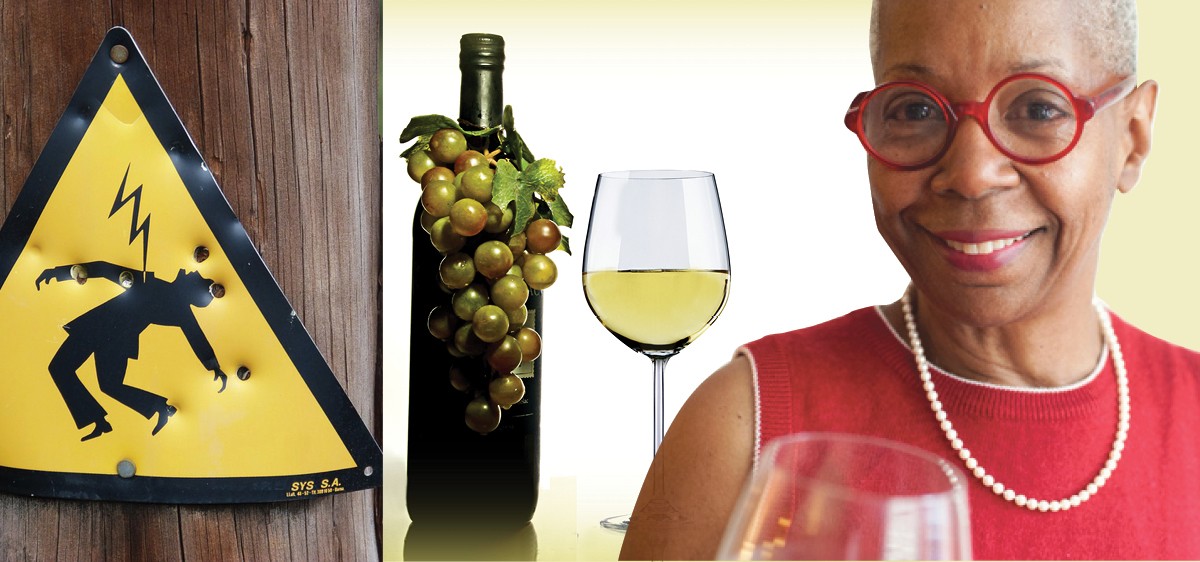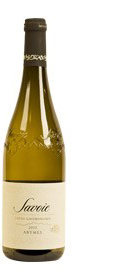
A restaurant can be an entryway to people’s love of wine and of unusual wines. We had many firsts at the legendary Cellar in the Sky in Windows on the World in lower Manhattan during the ’70s and ’80s. New tastes helped stoke our budding interest, each one adding a layer of knowledge about grape types, geography, history and visionary, risk-taking winemakers and their varied styles. Our taste memories expanded as a child’s world opens with every new word.
Into our fourth decade on this glorious journey, we’ve experienced some joyful, elucidating experiences with wine at restaurants and, unfortunately, some behaviors worthy of denigration. We had one of the latter a couple weeks ago, and it made us worry about the future of wine. I appreciate that one bad apple doesn’t spoil the bunch, but less confident wine lovers might eye the craft beer list next time.

We were hazed at a stylish seafood restaurant in Manhattan after we ordered the least expensive white wine on its interesting but overpriced wine list. We had not intended to order the least expensive white wine. It was just that we hadn’t had a Jacquère in a long time. We rarely see wines made from that grape on wine lists or in stores and we thought it would be great with oysters. Dry, with bracing acidity, stony minerals and lemon and floral notes, it was! The 2015 Jean Perrier et Fils Abymes Cuvée Gastronomie from Savoie, France, was $38 on the list. Its average retail price is $12. It wholesales for as little as $6.33. With spring and summer around the corner, if you can buy a case of this as your house white, do it!
We appreciate that the markup for inexpensive wines is higher than it is for expensive wines. Rightly so. Still, in talking to wine and restaurant professionals, what we’ve heard over the years is that three times their own wholesale (worth repeating) cost is a kind of benchmark—not an average, but a general number they talk about. If the wine is truly special, the issue of markup becomes less relevant.
Still, this wasn’t about the markup, though we couldn’t ignore the elephantine prices in the room. The restaurant staff wanted to shame us for ordering its least expensive white wine. We’ve concluded, after more than 40 years of dining in restaurants, from peanut-shells-on-the-floor joints to Michelin three-star places, that often the least-expensive wine on a list is a far better value than the second-least-expensive wine. We believe that wine directors know people are loath to order the least-expensive wine so they put a more pedestrian choice in the second-to-the cheapest position. (Of course, they deny this.) In this case, the second-cheapest was a Torrontés, at $39, which might have been just fine, but certainly as a type was much more commonplace.
Here’s what happened: As we neared the end of our delicious cocktails – a rare treat for us, but they looked so good -- John asked our waiter for a second copy of the wine list so I could look at it, too. (We generally do this since he, of course, is always handed the list.) When we both agreed on the Jacquère and John told the waiter, the waiter threw his arms into the air and said, “When you asked to see the wine list I thought you were going to….” And then he caught himself. The Jacquère, he said with some heat, had been on the Happy Hour sheet from which we’d ordered the oysters and cocktails.
We think what he was going to say and caught himself from saying is, “When you asked to see the big wine list, I thought you were going to order something more expensive.” To deflect, I told him that we enjoyed looking at wine lists. Wine was our hobby and their list was interesting.
Then he pretended not to understand John’s pronunciation. For the record, Jacquère is pronounced like “Jah-care” – and, yes, that’s what John said. So John pointed to the wine, but the waiter demanded that he order by number. Incredulous, John asked, “You want me to order the wine by number?” And the waiter said indeed he did. So from a very interesting list with many high-priced bottles, John ordered by number.
As soon as the waiter left, John and I looked at each other and suppressed a chuckle because what had just happened reminded us of two stories. In one of our Wall Street Journal columns in 1999, we recounted a howler from Bill Plante, senior White House correspondent who in November retired after 52 years with CBS News. He told us that when he was a junior reporter covering an early NASA space shot and looking for a restaurant with unusual wines, he found himself in a hole in the wall. “When he asked for the wine list,” we wrote in our column, “the waiter silently pointed at a sign:
Wines
1. White
2. Red
Please order by number
“Telling this story, Bill’s head tilts back, and he roars with laughter.”
The second involves John’s father, who sold Chevrolets. John has always said in discussions about pronunciations of grape names and wines that his father would never have refused to sell a car to someone because they said “Chevro-lette” instead of “Chevro-lay.”
Everyone can have a bad day. Perhaps our waiter was having one of those. He was also outré with the table of women next to us. However…
The sommelier arrived with the bottle, showed it to John and, opening it, said with a smirk-smile, “This is a wine that would not offend anyone.” That was all he said, and he never returned. Had he just dissed us and the wine? We think he was implying that with all the interesting wines on the list, we were cheap and idiotic to order the humble Jacquère. The list was thoughtful, but it had very few wines we considered unusual. It did have a white Château Musar, which is certainly unusual, but we’ve collected those wines from Lebanon for many years and met Serge Hochar, its longtime winemaker, who died in 2014.
If the sommelier hadn’t smirked, we might have told him that wines made from the Jacquère grape make us think of Spring. It was a particularly cold day. They also remind us of the charming Chasselas-based white wines of Switzerland, which is northeast of Savoie, where Jacquère reigns.
So we’re concerned that people who aren’t confident around wine when faced with similar treatment may resort to either ordering a wine they’re comfortable with, which may not be great or perfect with their food, or they might just order beer.
As for people in the service industry, if you’re going to sell a wine, even if it’s a white Zinfandel, you ought not to make fun of the people who buy it. If you’re embarrassed to pour it, don’t sell it.
Note: Dear Readers, as you know, I'm not one to shy from confronting bad behavior at restaurants, but I have not identified this restaurant and sought its manager's response because I feel this is not just about this sole establishment's behavior. Making it about this specific place lets others that countenance equally offensive behavior off the hook. It would be productive if restaurant personnel everywhere read this, weighed it, and discussed ways to make sure that none of their guests is ever treated this way.
Dorothy J. Gaiter conceived and wrote The Wall Street Journal's wine column, "Tastings," from 1998 to 2010 with her husband, John Brecher. She has been tasting and studying wine since 1973. She has had a distinguished career in journalism as a reporter, editor, columnist and editorial writer at The Miami Herald and The New York Times as well as at The Journal.










